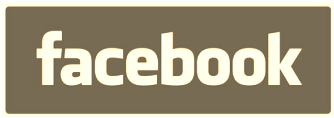See also: Part 1 about Twitter and Pinterest and Part 2 about LinkedIn, Tumblr, and Google+.
The overwhelming theme of the last decade has been the ubiquity of social media. This is as true in the field of marketing as it is in democracy itself. How many of us have willingly acquiesced to Facebook's terms of service & privacy policies so that we can share vacation pics and Onion articles with our friends? And how many realize that the content we share on Facebook, for most intents and purposes, actually belongs to Facebook?
The overwhelming theme of the last decade has been the ubiquity of social media. This is as true in the field of marketing as it is in democracy itself. How many of us have willingly acquiesced to Facebook's terms of service & privacy policies so that we can share vacation pics and Onion articles with our friends? And how many realize that the content we share on Facebook, for most intents and purposes, actually belongs to Facebook?
Brand marketers are very much aware of this, as Facebook has made it abundantly clear that a brand's "fans", the people who have liked an organization's page, belong not to the brand but to Facebook. In the heady first five years of public access to Facebook, a brand's reach was limited only by how many fans they could attract. Marketers ran contests, bought advertising, and hired consultants to rapidly grow their fan base so that their promotional posts would appear on as many personal newsfeeds as possible.
Truly, it was a wonderful way to reach people, with friendly posts tucked in between updates from friends and family. In the past couple of years, however, Facebook has dramatically reduced the "organic reach" of every brand's posts, throttling it down to almost zero in January of 2015. For businesses and organizations worldwide, fans were no longer within reach without payment.
Facebook is almost entirely now a paid reach platform and you should not expect any posts to reach any of your fans unless you pay to promote them. And, the more fans you have, the more you pay.
Which is a bummer. Because Facebook was pretty great for several years, especially for small businesses and non-profits with limited marketing budgets.
So, should brands give up on Facebook? Some have. But the hard truth is that Facebook remains one of the best ways to reach your customers, even if you have to pay for it. Take a look at what we've been doing with our page.
Like any other platform, Facebook requires daily presence, whether it's posts about new products or sharing interesting links. Your fans will make use of it to ask questions, or, like Twitter, pose customer service questions. These are generally public posts, so if you're able to respond quickly and effectively (as in any time of day or night), your fans will notice.
One little used feature is "Use Facebook as Page", which enables you to follow other brands and comment, like, or share their updates. This is a very effective way to grow your influence. Another is Facebook's new support for hashtags, which may attract interest to your posts.
Some business owners have branched out from Facebook pages and are also hosting groups, which aren't as yet subject to organic reach limitations. Groups are extremely dynamic and must offer a compelling reason to participate that transcends your brand. For example, a small business lawyer might host a group called "Minneapolis Small Business Best Practices," with the offer to provide answers and/or referrals to questions posed by members, along with plenty of free advice, member-only discounts, etc. Another example with which I have collaborated is the Plaid Friday Twin Cities group, which is working to re-brand Black Friday in favor of independent retailers. Groups can be public, private, or even invitation-only.
The risk of a group is about control. Members are free to post to the group and they may post spam, recommend your competitors, or make inaccurate or derogatory statements. Groups require constant moderation and you may end up ruffling some feathers if you ban members or delete posts.
So, if you're just starting out on Facebook, it's probably a very worthwhile investment of your time, especially if you want to cultivate a community of fans who will be engaged with your organization. If you've been using Facebook for a while and are frustrated by your diminished reach, it may be time to dedicate funds to boost your posts or investigate other strategies to improve your presence.
Truly, it was a wonderful way to reach people, with friendly posts tucked in between updates from friends and family. In the past couple of years, however, Facebook has dramatically reduced the "organic reach" of every brand's posts, throttling it down to almost zero in January of 2015. For businesses and organizations worldwide, fans were no longer within reach without payment.
Facebook is almost entirely now a paid reach platform and you should not expect any posts to reach any of your fans unless you pay to promote them. And, the more fans you have, the more you pay.
Which is a bummer. Because Facebook was pretty great for several years, especially for small businesses and non-profits with limited marketing budgets.
So, should brands give up on Facebook? Some have. But the hard truth is that Facebook remains one of the best ways to reach your customers, even if you have to pay for it. Take a look at what we've been doing with our page.
Like any other platform, Facebook requires daily presence, whether it's posts about new products or sharing interesting links. Your fans will make use of it to ask questions, or, like Twitter, pose customer service questions. These are generally public posts, so if you're able to respond quickly and effectively (as in any time of day or night), your fans will notice.
One little used feature is "Use Facebook as Page", which enables you to follow other brands and comment, like, or share their updates. This is a very effective way to grow your influence. Another is Facebook's new support for hashtags, which may attract interest to your posts.
Some business owners have branched out from Facebook pages and are also hosting groups, which aren't as yet subject to organic reach limitations. Groups are extremely dynamic and must offer a compelling reason to participate that transcends your brand. For example, a small business lawyer might host a group called "Minneapolis Small Business Best Practices," with the offer to provide answers and/or referrals to questions posed by members, along with plenty of free advice, member-only discounts, etc. Another example with which I have collaborated is the Plaid Friday Twin Cities group, which is working to re-brand Black Friday in favor of independent retailers. Groups can be public, private, or even invitation-only.
The risk of a group is about control. Members are free to post to the group and they may post spam, recommend your competitors, or make inaccurate or derogatory statements. Groups require constant moderation and you may end up ruffling some feathers if you ban members or delete posts.
So, if you're just starting out on Facebook, it's probably a very worthwhile investment of your time, especially if you want to cultivate a community of fans who will be engaged with your organization. If you've been using Facebook for a while and are frustrated by your diminished reach, it may be time to dedicate funds to boost your posts or investigate other strategies to improve your presence.

Which brings us to Instagram. Although it can be viewed on a desktop or notebook computer, almost all of Instagram's functionality is in its mobile app, the simple idea of which is to take picture or short video, apply a cool-looking filter, and share it with your friends.
In practice, Instagram is kind of like a mash-up of Twitter and Pinterest. You find followers and use hashtags and tag other users similar to Twitter, but the text is almost always secondary to the image. Instagram supports likes and comments, but doesn't support URL links or sharing. Like Twitter, posts are very time sensitive and will quickly be buried by new posts.
If you have compelling images to share, Instagram is a great choice. You'll need to cultivate a following, learn appropriate hashtags, and take lots of pics. Thankfully, Instagram is very simple to learn and a lot of fun to use. The app even makes it easy to your pics to Twitter and/or your Facebook page. We've really enjoyed building our Instagram feed.
Keep in mind, however, that Instagram is now owned by Facebook. It has recently begun to accept promoted posts from advertisers. Like Facebook, Instagram may become a pay to play platform.
In conclusion, the answer to which social media platform is best for your brand is probably several. As platforms evolve, it'll be very helpful to have an active presence in at least three so that you can take advantage of new features or growing user groups. And, if a well-performing platform starts asking for cash, you can cultivate your community elsewhere.
Above all, though, don't lose sight of the need for compelling blog posts, web copy, and email newsletters. These are unfiltered channels that you'll always have the most control over. Your goal should always be to grow your mailing list, generate leads, and improve your business or organization. All the instant meme buzz in the world isn't worth much if it doesn't create beneficial action. Social media can augment and amplify your core online presence, but it can't replace it.
In practice, Instagram is kind of like a mash-up of Twitter and Pinterest. You find followers and use hashtags and tag other users similar to Twitter, but the text is almost always secondary to the image. Instagram supports likes and comments, but doesn't support URL links or sharing. Like Twitter, posts are very time sensitive and will quickly be buried by new posts.
If you have compelling images to share, Instagram is a great choice. You'll need to cultivate a following, learn appropriate hashtags, and take lots of pics. Thankfully, Instagram is very simple to learn and a lot of fun to use. The app even makes it easy to your pics to Twitter and/or your Facebook page. We've really enjoyed building our Instagram feed.
Keep in mind, however, that Instagram is now owned by Facebook. It has recently begun to accept promoted posts from advertisers. Like Facebook, Instagram may become a pay to play platform.
In conclusion, the answer to which social media platform is best for your brand is probably several. As platforms evolve, it'll be very helpful to have an active presence in at least three so that you can take advantage of new features or growing user groups. And, if a well-performing platform starts asking for cash, you can cultivate your community elsewhere.
Above all, though, don't lose sight of the need for compelling blog posts, web copy, and email newsletters. These are unfiltered channels that you'll always have the most control over. Your goal should always be to grow your mailing list, generate leads, and improve your business or organization. All the instant meme buzz in the world isn't worth much if it doesn't create beneficial action. Social media can augment and amplify your core online presence, but it can't replace it.

 RSS Feed
RSS Feed
